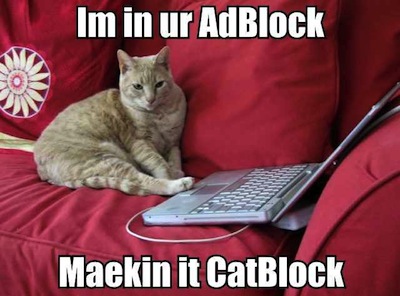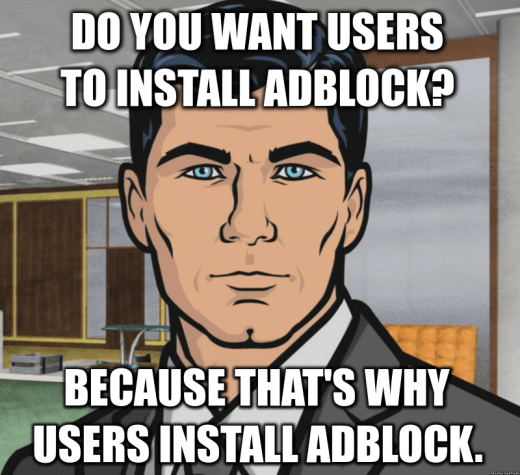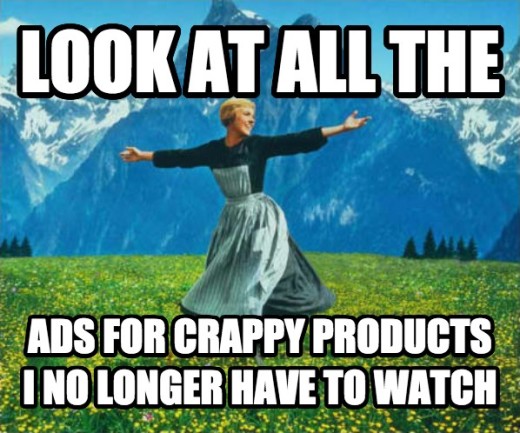
Adblocking is a provocative topic.
With reform imminent, aside from the economic and legal implications of its utility, there are further reaching user-centric implications at play here. Adblocking is the Tiananmen Square moment for the online advertising industry. Cultural icons from Jerry Seinfeld to Banksy have given their takes on advertising as a medium. And companies like Adblock Plus, uBlock, Kiip, Lootsie and Purify have offered glimpses into a world past advertising as it is today.
But what happens when ads are blocked, and structure is fundamentally shifted to user-controlled experiences? This question and its answer(s) sit at the epicenter of individual, collective and global implications.
There are many implications in play with adblocking. Here are five ways adblockers may change your online experience this year.
Increased alignment among publishers and users
Without the online advertising economy to fall back on, publishers will have to look at alternative ways to make money that are in alignment with what users want.

With the IAB even issuing a mea culpa stating they messed up by chasing revenue at the expense of user experiences, the industry response will be one of reform where publishers will align themselves more alongside users. This will mean even more relevant content.
Increased alignment between advertisers and publishers
Whereas the relationship between advertiser and publisher has been sterile, if not seedy, at most times, advertisers and publishers will need to come to the table to find ways to better serve consumers and users. Just being in this conversation is a marked shift in how the relationship dynamic.
The effect here will translate economically across both parties, improving transparency and reducing resource inefficiency.
Improved content by advertisers
The ethos is important to note here. For nearly a century, advertising has been built on crowd psychology and psychoanalytical ideas used for the intention to manipulate. Adblocking makes this model antiquated. Instead, advertisers will have to find other ways to align themselves with users.

This means they’ll be thinking content that adds value, first and foremost, rather than advertisements that capture eyeballs. The intention here is key and will have ramifications downstream to the individual consumer and upstream to the company itself. Company values will change.
Aligned content is king, queen and servant
For years, content has been lauded as king. However, this was a way of sweeping dust under the rug. You visited the king, but the palace was shoddy. Now, the whole court and palace will be built to serve the user.
This may even visually shift technologies and how they look, feel, and respond to user. Fred Wilson of Union Square Ventures famously said that “the ultimate sharing economy is the sharing economy without middle men.”
The economy of content and user will become much less than it is now. The court will serve what the user wants to see.
Improved cognitive function
Adblocking won’t simply change what you see, its implications may change you.

Neuroscientists have recently made a correlation between increase of alpha brain waves and the ability to reduce depressive symptoms and increase creative thinking. Imagine an online world where you do not get inundated with advertising clutter that suggests that you need to look at certain look or be a certain being.
As recent research is finding that humans can make much more efficient use of our auditory-detection systems, in years, we may see the effect of a user-controlled web experience in improving visual processing and our neurobiology. The implication on neuroplasticity and neurogenesis is one to pay attention to.
Getting started
Haven’t used adblockers before? Here are three steps to change your online experience for yourself with adblocking on your web browser:
- Make note of how your online experience is currently with online ads as they are. Do this before installing an adblocker. This will capture an adequate, if qualitative, “before” snapshot of your online experience.
- Install an adblock extension on your browser. uBlock, AdBlock Plus or others will suffice. Use it for one week. This will provide sufficient time to experience the web with adblocking.
- Turn your adblocker off and experience the web again with advertisements. Make note of how the online experience feels with advertising again. This is your “after” snapshot. What we’re finding qualitatively is that descriptors of dissonant annoyance in the first step escalates to deep frustration in step three after just one week of adblocking.
Read next: Why adblocking is the new speeding
Get the TNW newsletter
Get the most important tech news in your inbox each week.





